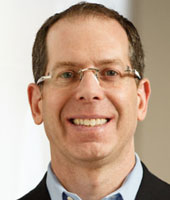Can Pharma Move Us From Sick Care To Healthy Care?

By Ed Miseta, Chief Editor, Clinical Leader

The 2019 CNS Summit will kick off on October 31, 2019 and feature four days of sessions that are enlightening and inspiring, as well as unparalleled networking opportunities. This is the 10th anniversary of the Summit, which brings together thought leaders and innovators from sponsor companies, government, and solutions providers to collaborate and drive the success of future clinical development programs. With spotlight sessions focusing on artificial intelligence, digital therapeutics, real-world evidence, decentralized trials, putting the patient first, and more, this promises to be an event you don’t want to miss.
One of this year’s presenters is Ian M. Marks, VP R&D Innovation, GSK Consumer Healthcare. In this Q&A, Marks discusses clinical innovation, AI and machine learning, and how we can better preventively treat patients.
Ed Miseta: What topics will you be addressing in your session at CNS Summit?
 Ian M. Marks: Historically, our healthcare system has been focused on “sick care” – treating illness. But as we move to the future, technology is enabling us to shift that focus from “making us better” to “keeping us well.” That shift requires innovation; we’re fortunate to live in a time of exponential technological gains. From virtually invisible medical hardware – used extensively in wearables – to AI, machine learning, and interactive technologies that incorporate behavioral science on your smartphone or in your smart home, technology enables proactive, engaged selfcare. I’m going to explore these advances, and the vital role of innovation and partnerships in helping to improve care, increase access and reduce costs.
Ian M. Marks: Historically, our healthcare system has been focused on “sick care” – treating illness. But as we move to the future, technology is enabling us to shift that focus from “making us better” to “keeping us well.” That shift requires innovation; we’re fortunate to live in a time of exponential technological gains. From virtually invisible medical hardware – used extensively in wearables – to AI, machine learning, and interactive technologies that incorporate behavioral science on your smartphone or in your smart home, technology enables proactive, engaged selfcare. I’m going to explore these advances, and the vital role of innovation and partnerships in helping to improve care, increase access and reduce costs.
Miseta: Can you share any insights into how the industry is using AI and machine learning to improve clinical trials?
Marks: Through the marriage of data, AI, and machine learning, we can improve the drug development process in revolutionary ways. Harnessing data through AI opens a window into consumers’ physical and demographic types, allowing us to develop drugs that more directly meet specific patients’ needs. AI and machine learning are also allowing us to identify those patients who will have the best therapeutic response to a compound with the fewest side effects. And, data and AI improve the clinical trial process by making recruitment faster and more efficient, thereby increasing the effectiveness of the process and lowering costs at the same time.
Miseta: Are you seeing an uptick in the use of decentralized clinical trials and are they making trial participation easier for patients?
Marks: In my innovation work, we always start with the consumer first. That’s our true north, and virtual trials, despite the reservations of some, have the benefit of immersing the patient in the trial. Through the use of smartphone and tablet apps, as well as wearables, we have the ability to leverage mobile networks and free-up data collection from the clinic. This allows researchers to gather information from anyone, anywhere, anytime. It’s a revolutionary approach that’s already in play, and I think we will see more and more clinical trials conducted with patients in the stream of daily life.
Miseta: What are some of the biggest clinical challenges that new technologies will try to disrupt or eliminate over the next 10 years?
Marks: AI and machine learning are already in the process of transforming how we meet our biggest challenge – treating preventively. But, they can only do this if people are willing to share their health data, and that is itself a challenge. To be effective, AI must learn from the data of hundreds of thousands of people. Only with that access to data will we realize the benefits in meeting the biggest clinical challenges, which include more personalized precision medicine, better population health forecasting, more effective and faster drug trials, improved care of chronic diseases and, ultimately, lowered medical costs.
